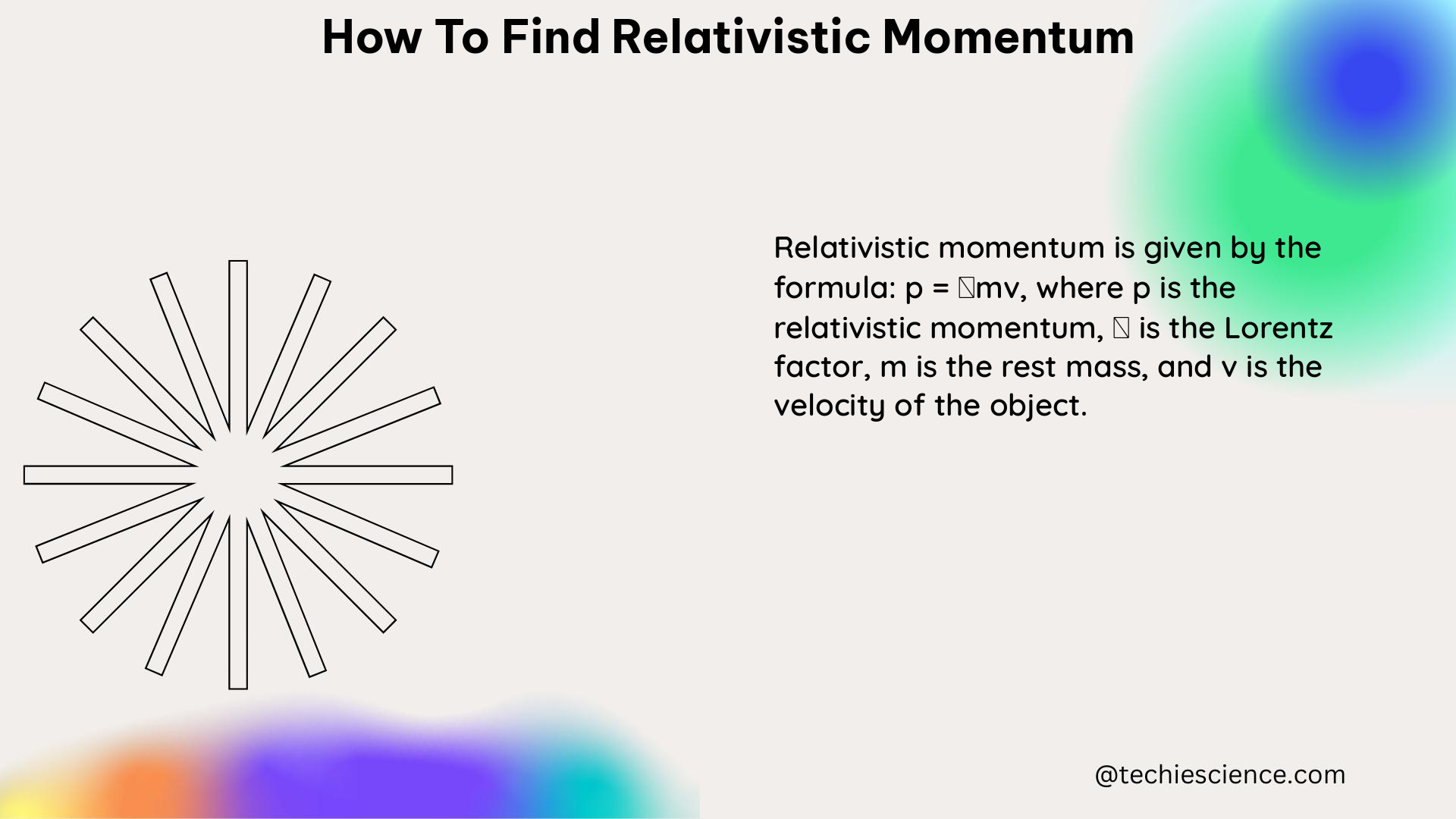Summary
Relativistic momentum is a fundamental concept in the theory of special relativity, which describes the motion of objects moving at high speeds. To calculate the relativistic momentum of a particle, you need to use a specific formula that takes into account the particle’s rest mass and velocity relative to the observer. This guide will provide you with a detailed, step-by-step explanation of how to find the relativistic momentum of a particle, including relevant formulas, examples, and additional resources.
Understanding Relativistic Momentum

Relativistic momentum is the momentum of a particle or object moving at a significant fraction of the speed of light. It is different from the classical momentum (p = m_0 * v) because it takes into account the effects of special relativity, which become significant as the velocity of the particle approaches the speed of light.
The formula for relativistic momentum is:
p_v = (m_0 * v) / sqrt((1 - v^2/c^2))
Where:
– p_v is the relativistic momentum
– m_0 is the rest mass of the particle
– v is the velocity of the particle
– c is the speed of light
Calculating Relativistic Momentum
To calculate the relativistic momentum of a particle, follow these steps:
-
Determine the rest mass (m_0) of the particle: This is the mass of the particle as measured by an observer at rest relative to the particle.
-
Measure the velocity (v) of the particle relative to an observer: Make sure to use the same units as the speed of light (c).
-
Calculate the square of the velocity (v^2) and divide it by the square of the speed of light (c^2): This will give you a fraction representing the relativistic effects on the momentum of the particle.
-
Subtract this fraction from 1 to get the denominator of the formula: This step is necessary to account for the relativistic effects.
-
Divide the product of the rest mass (m_0) and the velocity (v) by the denominator: This will give you the relativistic momentum (p_v).
Here are some examples to illustrate the calculation:
Example 1: Particle with a rest mass of 1 kg and a velocity of 0.5c
p_v = (1 * 0.5c) / sqrt((1 - (0.5c)^2/c^2))
p_v = (0.5c) / sqrt(1 - 0.25)
p_v = (0.5c) / sqrt(0.75)
p_v = (0.5c) / 0.866
p_v = 0.577c kg·m/s
Example 2: Particle with a rest mass of 10 kg and a velocity of 0.99c
p_v = (10 * 0.99c) / sqrt((1 - (0.99c)^2/c^2))
p_v = (9.9c) / sqrt(1 - 0.9801)
p_v = (9.9c) / sqrt(0.0199)
p_v = (9.9c) / 0.141
p_v = 70.14c kg·m/s
As you can see, the relativistic momentum is much larger than the classical momentum when the velocity of the particle is close to the speed of light.
Relativistic Momentum Theorem
The relativistic momentum theorem states that the relativistic momentum of a particle is given by the formula:
p_v = (m_0 * v) / sqrt((1 - v^2/c^2))
Where:
– p_v is the relativistic momentum
– m_0 is the rest mass of the particle
– v is the velocity of the particle
– c is the speed of light
This formula is derived from the principles of special relativity and the conservation of momentum. It takes into account the fact that the mass of a particle increases as its velocity approaches the speed of light, which leads to a corresponding increase in its momentum.
Relativistic Momentum and Classical Momentum
When the velocity of the particle is much smaller than the speed of light, the relativistic momentum is very similar to the classical momentum (p = m_0 * v). However, as the velocity approaches the speed of light, the relativistic momentum increases exponentially and becomes much larger than the classical momentum.
This is because the classical momentum formula does not take into account the relativistic effects, which become significant at high velocities. The relativistic momentum formula, on the other hand, accounts for these effects and provides a more accurate representation of the particle’s momentum.
Limitations of Relativistic Momentum
It is important to note that the speed of light (c) is the absolute limit of any body’s velocity. No objects in the universe can exceed this limit. While classical momentum (p = m_0 * v) becomes infinite as the velocity approaches the speed of light, relativistic momentum approaches infinity as the velocity approaches the speed of light.
This means that the relativistic momentum formula is only valid for velocities that are significantly less than the speed of light. At velocities close to the speed of light, the formula may not provide accurate results, and other relativistic effects, such as time dilation and length contraction, must be taken into account.
Additional Resources
For further information and resources on relativistic momentum, you can refer to the following:
Reference:
– Relativistic Momentum | Physics – Lumen Learning
– Relativistic Momentum: Formula & Application – StudySmarter
– How to Calculate the Relativistic Momentum of a Particle – Study.com
– Relativistic Energy | Physics – Lumen Learning
– Special Relativity: Relativistic Momentum – HSC Physics

The lambdageeks.com Core SME Team is a group of experienced subject matter experts from diverse scientific and technical fields including Physics, Chemistry, Technology,Electronics & Electrical Engineering, Automotive, Mechanical Engineering. Our team collaborates to create high-quality, well-researched articles on a wide range of science and technology topics for the lambdageeks.com website.
All Our Senior SME are having more than 7 Years of experience in the respective fields . They are either Working Industry Professionals or assocaited With different Universities. Refer Our Authors Page to get to know About our Core SMEs.